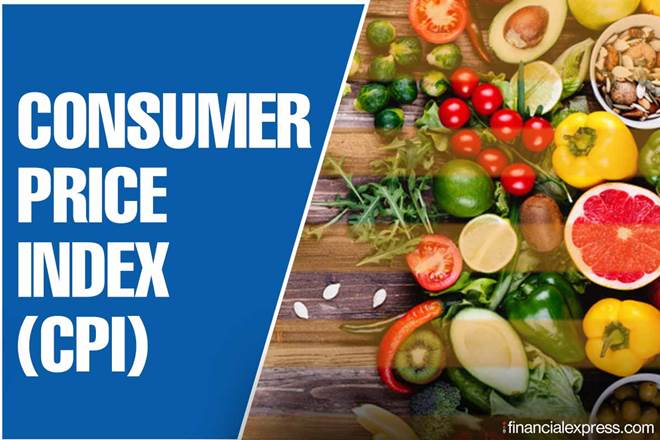According to the Pakistan Bureau of Statistics, consumer price index-based inflation (CPI) in Pakistan increased by 27.3 percent year on year in August 2022, up from 24.9 percent the previous month and 8.4 percent in August 2021. (PBS).
In the first two months of the current fiscal year 2023, the average inflation rate is 26.1 percent, compared to 8.36 percent in 2022. Economists estimate that this is the highest monthly inflation rate since October 1973.
It is worth noting that the full impact of flooding has yet to be understood.
According to the PBS’s monthly review of price indices, CPI increased by 2.4 percent month on month in August 2022, compared to 4.3 percent the previous month and 0.6 percent in August 2021.
The National Consumer Price Index for August 2022 grew by 2.45 percent over July 2022 and by 27.26 percent over the previous year’s equivalent month, August 2021.
According to PBS statistics, wholesale price index (WPI) inflation jumped by 41.2 percent year on year in August 2022, compared to 38.5 percent a month earlier and 17.1 percent in August 2021, indicating that inflation is anticipated to rise more in the next days and months.
Potatoes, eggs, pulse masoor, wheat, rice, milk, energy charges, motor fuels, building input goods, stationery, motor vehicle accessories, cleaning & washing, liquid hydrocarbons, and woollen fabric all saw price increases.
CPI inflation in urban areas climbed by 26.2 percent year on year in August 2022, compared to 23.6 percent the previous month and 8.3 percent in August 2021. On a month-to-month basis, it climbed by 2.6 percent in August 2022, compared to 4.5 percent the previous month and 0.5 percent in August 2021.
Rural CPI inflation grew by 28.8 percent year on year in August 2022, compared to 26.9 percent the previous month and 8.4 percent in August 2021. On a month-to-month basis, it climbed by 2.2 percent in August 2022, compared to 4.2 percent the previous month and 0.7 percent in August 2021.
Sensitive Price Index (SPI) inflation grew by 34.0 percent year on year in August 2022, compared to 28.2 percent a month earlier and 15.9 percent in August 2021. On a month-to-month basis, it climbed by 5.2 percent in August 2022, compared to 7.3 percent the previous month and 0.7 percent in August 2021.
In August 2022, wholesale price index (WPI) inflation grew by 41.2 percent year on year, compared to 38.5 percent a month earlier and 17.1 percent in August 2021. WPI inflation grew by 3.1 percent month on month in August 2022, compared to 2.0 percent a month earlier and 1.2 percent in the previous month, Aug 2021.
Non-food and non-energy urban climbed by 13.8 percent year on year in August 2022, compared to 12.0 percent the previous month and 6.3 percent in August 2021. On a month-to-month basis, it climbed by 1.8 percent in August 2022, compared to 1.2 percent in the previous month and 0.2 percent in the previous year’s equivalent month, August 2021.
Non-food non-energy Rural grew by 16.5 percent year on year in August 2022, compared to 14.6 percent the previous month and 6.2 percent in August 2021. On a month-to-month basis, it increased by 1.8 percent in August 2022, compared to 1.6 percent in the previous month and 0.2 percent in the previous year’s corresponding month, August 2021.
Urban grew by 21.4 percent year on year in August 2022, compared to 19.1 percent the previous month and 7.8 percent in August 2021, as measured by a 20% weighted trimmed mean. On a month-to-month basis, it climbed by 1.7 percent in August 2022, compared to 2.7 percent in the previous month and 0.4 percent in the previous year’s equivalent month, August 2021.
Read Also: Trade between Pakistan and Germany has huge potential, according to Pakistan’s Commerce Minister.
Rural grew by 23.8 percent year on year in August 2022, compared to 21.7 percent the previous month and 7.8 percent in August 2021, as measured by a 20% weighted trimmed mean. On a month-to-month basis, it climbed by 1.8 percent in August 2022, compared to 2.7 percent in the previous month and 0.6 percent in the previous year’s equivalent month, August 2021.
Food
Tomatoes (52.85 percent), pulse moong (15.27 percent), vegetables (13.44 percent), pulse mash (12.47 percent), pulse masoor (11.76 percent), eggs (7.53 percent), besan (6.5 percent), pulse gramme (6.08 percent), gramme whole (5.67 percent), potatoes (4.99 percent), beans (3.07 percent), and cooking oil are the top few commodities that differed from the previous month and contributed to Urban CPI (2.34 percent).
Among the food that reported a reduction, the top few items that differed from the previous month and contributed to the Urban CPI include fruits (19.98 percent), chicken (11.54 percent), and vegetable ghee (0.74 percent).
Non-food prices increased:
energy charges (19.73%), liquid hydrocarbons (8.53%), readymade clothing (7.85%), construction input goods (7.53%), stationery (7.29%), cleaning & laundry (6.73%), motor vehicle accessories (5.20%), cotton fabric (4.67%), and furniture & furnishing (4.67%). (2.33 percent).
Year on year, the top few commodities that differed from the corresponding month of the previous year, i.e. August 2021, and increased among food include: pulse masoor (114.34 percent), onions (90.54 percent), mustard oil (81.16 percent), gramme whole (77.23 percent), cooking oil (74.66 percent), vegetable ghee (69.82 percent), pulse gramme (60.25 percent), chicken (59.89 percent), pulse mash (52 (25.01 percent).
The top few commodities changed from the previous year’s equivalent month, August 2021, and decreased: condiments & spices (17.43 percent) and sugar (15.69 percent).
Tomatoes (30.02 percent), vegetables (19.62 percent), pulse mash (15.15 percent), pulse masoor (13.69 percent), pulse moong (12.71 percent), besan (9.71 percent), pulse gramme (8.92 percent), condiments & spices (7.73 percent), eggs (6.55 percent), gramme whole (6.29 percent), potatoes (5.51 percent), onions (4.26 percent), beans (3.57 percent) are the top few commodities that varied from the previous month and (1.88 percent).
Fruits (24.28%), poultry (13.64%), vegetable ghee (2.86%), cooking oil (2.54%), mustard oil (1.18%), and sugar were all reduced (0.31 percent) Non-food increased: energy costs (19.73%), liquid hydrocarbons (6.97%), cleaning & laundry (3.42%), footwear (3.30%), stationery (2.97%), furniture & furnishing (2.83%), readymade clothes (2.40%), and cotton fabric (2.40%). (1.88 percent).
Year on year:
the top few commodities that differed from the corresponding month of the previous year, i.e. August 2021, and increased (food) are: pulse masoor (118.64 percent), onions (96.70 percent), gramme whole (88.82 percent), cooking oil (69.61 percent), mustard oil (69.19 percent), vegetable ghee (68.67 percent), pulse gramme (65.65 percent), chicken (63.26 percent), pulse mash ( (24.41 percent).
Year-on-year: Sugar is the top commodity that has changed from the previous year’s equivalent month, August 2021, and has declined (16.29 percent).
Other than Food
The top commodity that changed from the previous month and contributed to the fall in the Urban CPI among non-food items is motor gasoline (2.60 percent).
Year on year, the following commodities varied from the previous year’s corresponding month, i.e. August 2021, and increased: electricity charges (123.37 percent), motor fuel (84.21 percent), stationery (44.12 percent), cleaning & laundering (39.16 percent), liquefied hydrocarbons (33.66 percent), washing soap/detergents/matchbox (28.86 percent), construction input items (27.77 percent), motor vehicle accessories (27.37 percent) (23.53 percent).
Motor fuels are among the top few items that changed from the previous month and contributed to the rural CPI while decreasing (non-food) (3.16 percent).
Electricity charges (123.37 percent), motor fuels (87.34 percent), liquefied hydrocarbons (43.92 percent), construction input items (35.44 percent), cleaning & laundering (30.49 percent), motor vehicle accessories (28.80 percent), washing soaps/detergents/match box (28.23 percent), stationery (27.23 percent), solid fuel (22.25 percent), and hosiery are among the non-food items that have increased in price (22.15 percent).
Overall
Electrical energy (33.90 percent), vegetables (31.96 percent), paper (21.09 percent), pipe fittings (20.36 percent), silk & rayon fabrics (14.89 percent), fibre crops (13.56 percent), stimulant & spice crops (13.40 percent), other fabrics (12.10 percent), tractors (11.02 percent), chuff cutter (10.88 percent), ceramics & sanitary fixture (8.9 percent), tractors (11.02 percent), chuff cutter (10.88 percent), ceramic (6.81 percent).
Reduced: chicken (11.47%), fruits (9.28%), diesel oil (7.29%), kerosene oil (6.29%), motor spirit (4.71%), bajra (3.92%), furnace oil (3.13%), cement (2.47%), maize (2.05%), and steel bar & sheets (1.32 percent).
Year on year:
the top few commodities that differed and increased from the previous year are chuff cutter (178.21 percent), concrete mixture (139.71 percent), kerosene oil (127.8 percent), diesel oil (118.34 percent), electrical energy (115.8 percent), motor spirit (93.08 percent), furnace oil (83.93 percent), fertilisers (81.10 percent), coal (79.42 percent), chemicals (79.06 percent), pulses (74.24 percent), vegetable (48.41 percent).
Year on year, the top few commodities that increased and declined include spices (39.78 percent), stimulant & spice crops (19.24 percent), bajra (15.18 percent), and sugar (14.63 percent).











